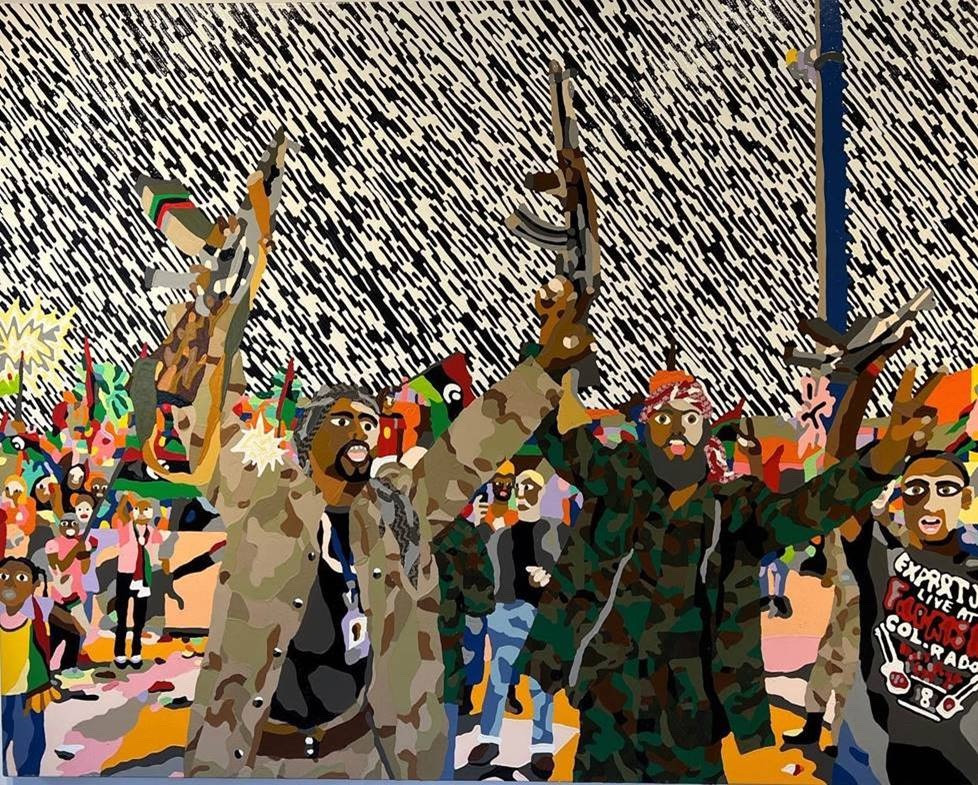 Jemima Wyman, First Sight Protest: Fighters for Libya’s interim Government, 2012
Jemima Wyman, First Sight Protest: Fighters for Libya’s interim Government, 2012Courtesy of the artist and Sullivan+Strumpf, Sydney
“Social camouflage in protest compels me because it’s simultaneously about illusion, play, warfare, decoration and survival,” explains Jemima Wyman of her abiding interest in these performative tropes of conflict.
First Sight Protest: Fighters for Libya’s interim Government (2012) represents a scene from the Arab Spring movement of the early 2010s. It is from a larger body of work focusing on how the mask shields the face to guarantee anonymity for the individual while ensuring distinguishability for the collective through its visual properties. Group formation therefore enables a powerful expression of protest through disappearance and visibility. Wyman likens this phenomenon to zebra behaviour and patterning. When a dazzle of zebras merge as a defence tactic against a predator, their strength in numbers is assured by collectivity patterning. “I see this as a metaphor for political struggle, with liberation armies and protesters resisting oppressive governments or big business through the use of ‘tactical frivolity’,” says Wyman.
This work comprises pieced camouflage fabric collaged to the surface, with enamel and acrylic house paint that was poured with a turkey baster. For Wyman, this technique “evolved from a feminist refusal to use a brush and participate in the patriarchal history of painting”. Though her gendered interpretation of action or drip painting has an art historical lineage, the tool used has a long association with self-determined protest practices relating to reproduction, particularly in queer contexts. By removing her hand as the paint applicator and working from above, Wyman maps the vivid composition of the work from a distance, similarly playing with the idea of presence and absence or integration and erasure, forged by the visual strategies of protest collectives. Her role as the artist is not to govern or recruit, but to assert innovative sociological commentary on public forms of assembly from a visual culture perspective.
Performative scenes of protest gain momentum and power precisely through their ephemerality. Contemporary culture is awash with protest imagery that now transmits, circulates, retains currency and builds power through online and social media channels. By drawing on documentation from the internet as material for painting, Wyman adopts visual resistance ploys for painting as a radical rethinking of democracy. “By crafting metaphoric skins that individuals can wear, or a community can share in, I bring awareness to the politics of embodiment (being) and spectacle (seeing). This work developed from a feminist position and a desire to equalize the gaze, to make it reciprocal.”
- Jemima Wyman interviewed by the author by email, 10 November 2022. All quotations from the artist taken from this source.
Catalogue essay for The Art of Giving at Macquarie University Art Gallery, Sydney, December 2022 – March 2023.
Published by Macquarie University in 2022.